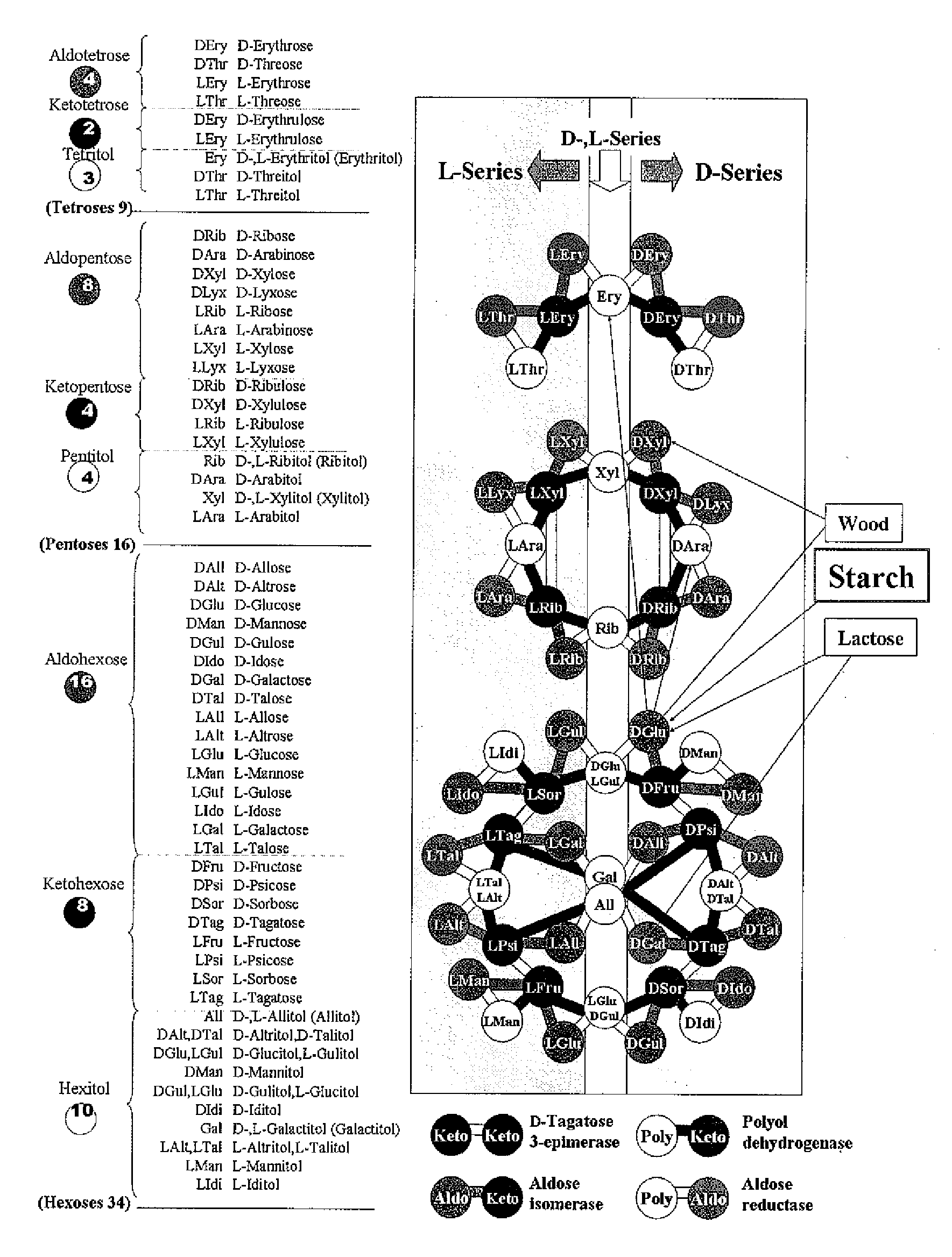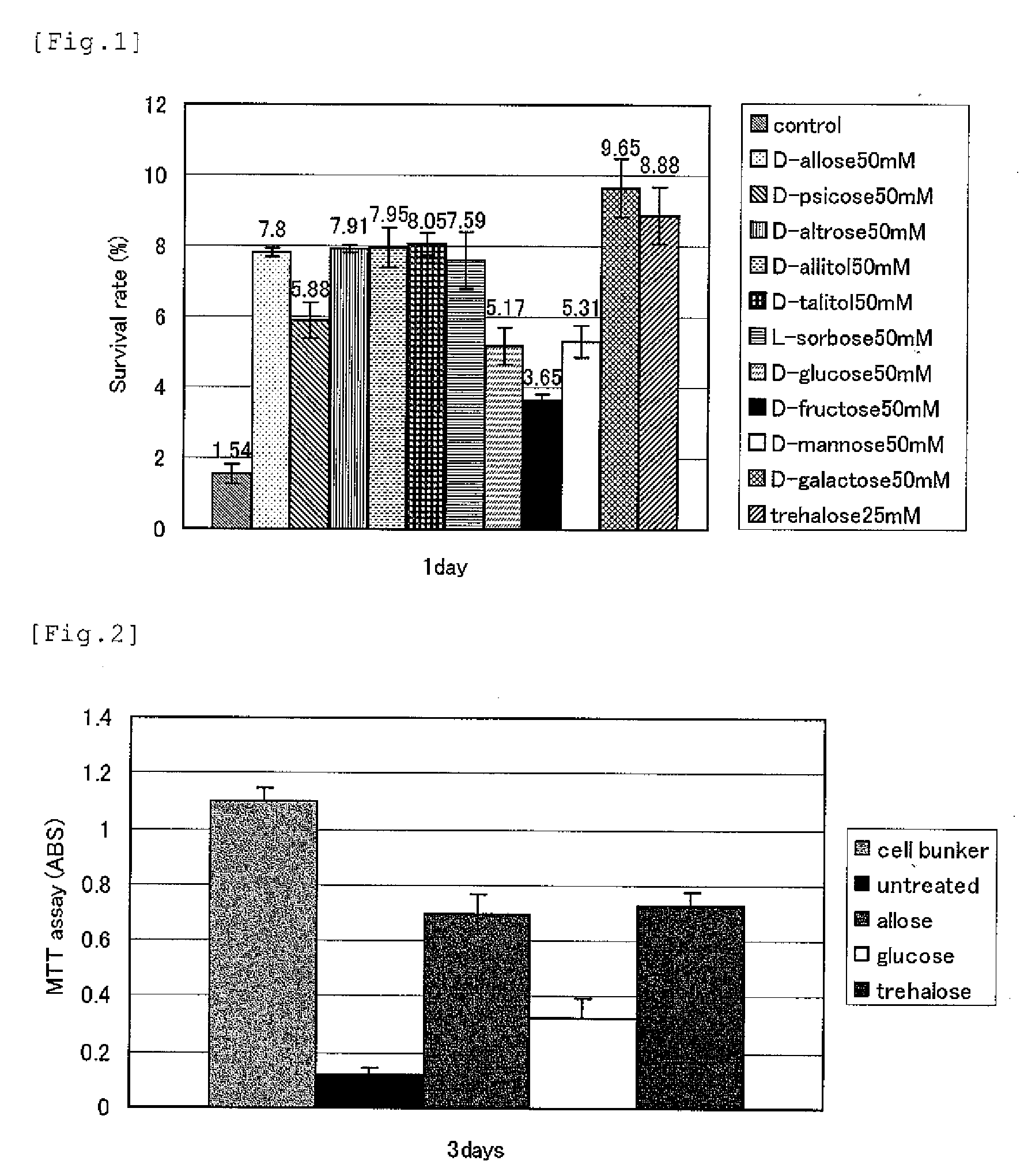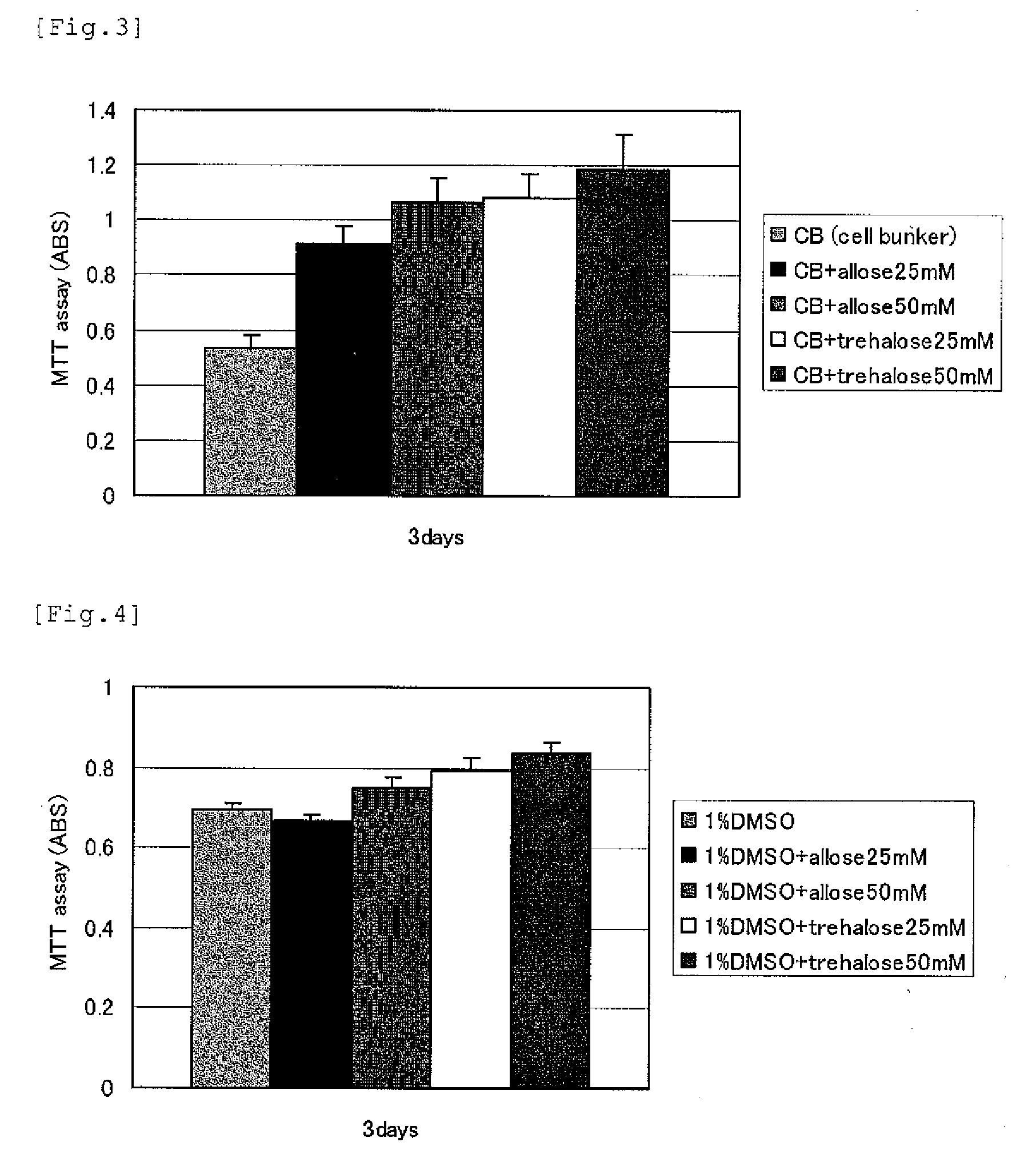Preservative Solution for Cells, Tissues and Organs Comprising Rare Sugar and Preservation Method with the Use of the Same
a technology of preservation solution and rare sugar, which is applied in the field of preservation solution, can solve the problems of unsatisfactory long-term preservation or supply system of blood or the like, lack of donors, and seriousness, and achieves the effects of prolonging preservation, commercial practicability, and prolonging preservation
- Summary
- Abstract
- Description
- Claims
- Application Information
AI Technical Summary
Benefits of technology
Problems solved by technology
Method used
Image
Examples
example 1
[0054]Using culture cells, the effect of rare sugars on freeze-preservation thereof were analyzed. The survival rate of cells, and the growth rate of survived cells and the like were examined.
[0055][Method]
[0056]1. Cells used: Hela (human cervical cancer), OVCAR-3 (human ovarian cancer), HuH-7 (human liver cancer), HaCaT (human skin keratinocyte), HFB (human fibroblast) and NIH3T3 (mouse fibroblast).
[0057]2. Freeze-Preservation
[0058]Saccharides D-allose and the like were added to culture medium, Cell Banker (commercially available preservative solution) and DMSO at concentrations of 25 mm and 50 mM. Monosaccharides such as D-glucose, D-fructose, D-mannose and D-galactose which are present in nature in large quantities and D-allose, D-psicose, D-altrose, allitol, D-talitol and L-sorbose as rare sugars were used. Further, trehalose as disaccharide was used. The cells were preserved for 24 hours by being frozen at −80° C.
[0059]3. Measurement
[0060]1) Survival rate of cells: One day late...
example 2
[0073]Using culture cells, the effect of rare sugar on freeze-preservation thereof was analyzed. The survival rate of cells, and the growth rate of the survived cells and the like were examined. Although examination was conducted at the low concentration of 50 mM in Example 1, the present inventors found that the preservation was more effective at a higher concentration, which was verified in this Example.
[0074][Method]
[0075]1. Cells used: Hela (human cervical cancer), OVCAR-3 (human ovarian cancer), HaCaT (human skin keratinocyte), HFB (human fibroblast) and NIH3T3 (mouse fibroblast).
[0076]2. Freeze-Preservation
[0077]Saccharides D-allose and the like were added to culture medium, Cell Banker (commercially available preservative solution) and DMSO at concentrations of 0.2, 0.4, 0.6, 0.8 and 1M. Monosaccharides such as D-glucose, D-fructose, D-mannose and D-galactose which are present in nature in large quantities and D-allose, D-altrose, D-psicose, L-psicose, D-sorbose, L-sorbose, D...
example 3
[0098]Subject of experiment: Improvement of UW solution using D-allose
[0099][Introduction]
[0100]An adhesion rate of the kidney after renal transplantation has been abruptly improved along with the development of the UW solution. However, ischemia of the transplanted kidney induces the acute rejection of the transplanted kidney or the decrease in function thereof which greatly influences the adhesion rate.
[0101]In the renal ischemia, ATP is depleted in the angioendothelium, and calcium and active oxygen (reactive oxygen species: ROS) are produced to activate neutrophils and express bonding factors such as ICAM-1. Further, in the blood cell system, macrophages are activated to release TNF (tumor necrosis factor) or ROS. Consequently, neutrophils are activated and accumulated with expressed bonding factors, and entered from the angioendothelium to the tissue to release histolytic enzymes such as elastase, which leads to tissue disorders. For preventing the functional disorder and the r...
PUM
 Login to View More
Login to View More Abstract
Description
Claims
Application Information
 Login to View More
Login to View More - R&D
- Intellectual Property
- Life Sciences
- Materials
- Tech Scout
- Unparalleled Data Quality
- Higher Quality Content
- 60% Fewer Hallucinations
Browse by: Latest US Patents, China's latest patents, Technical Efficacy Thesaurus, Application Domain, Technology Topic, Popular Technical Reports.
© 2025 PatSnap. All rights reserved.Legal|Privacy policy|Modern Slavery Act Transparency Statement|Sitemap|About US| Contact US: help@patsnap.com



